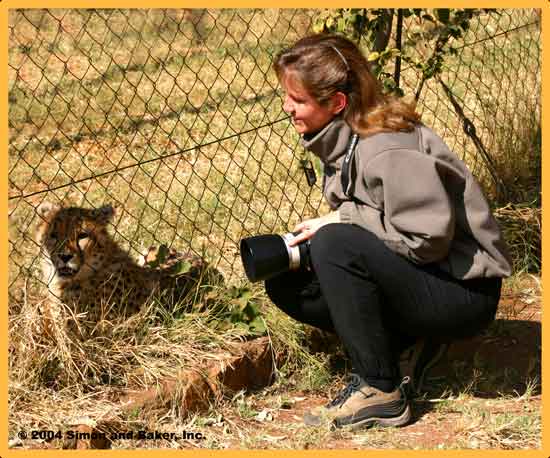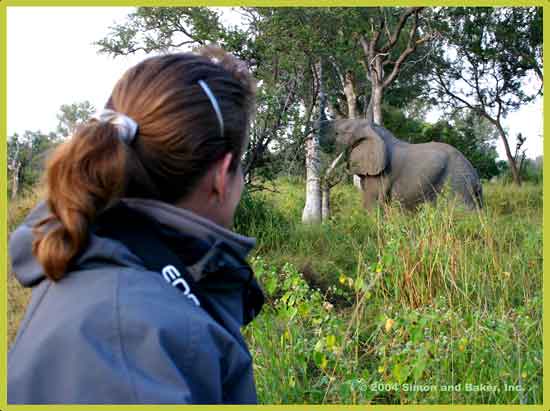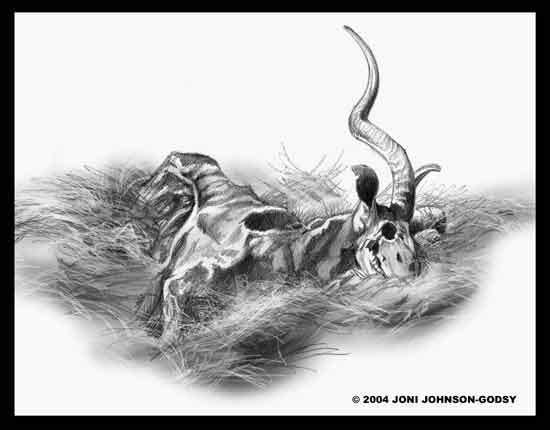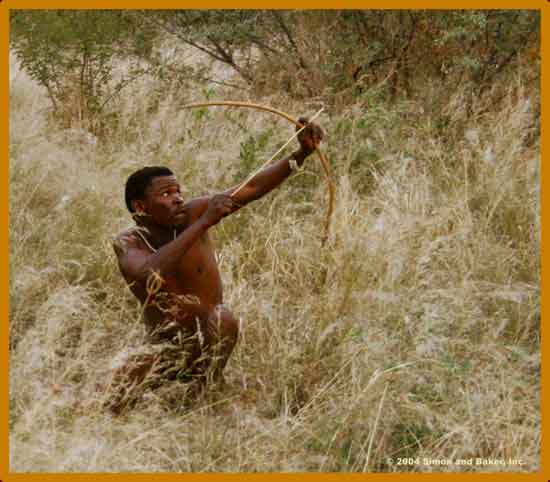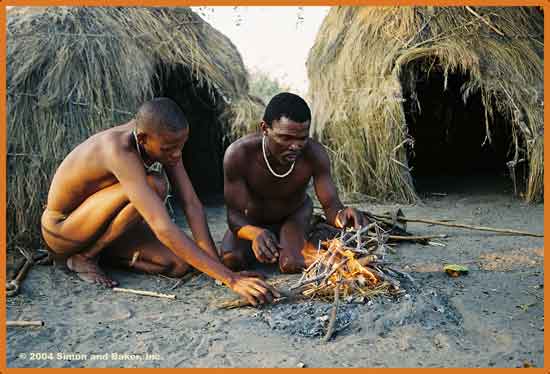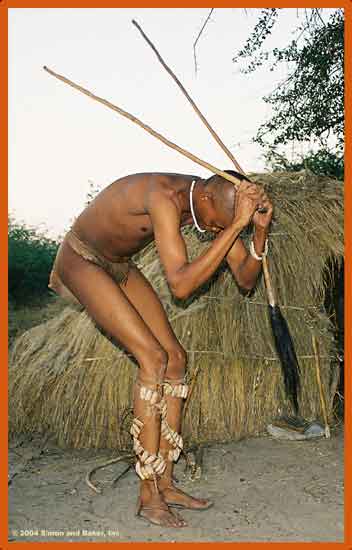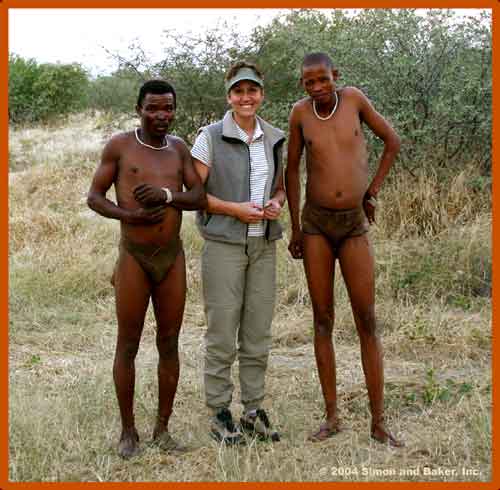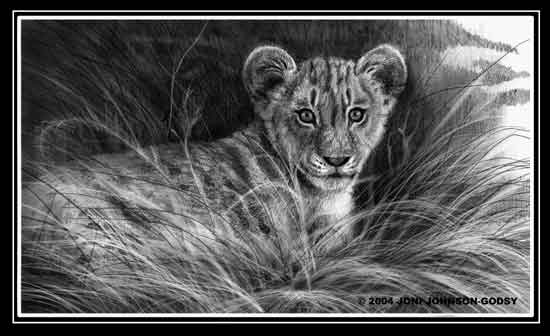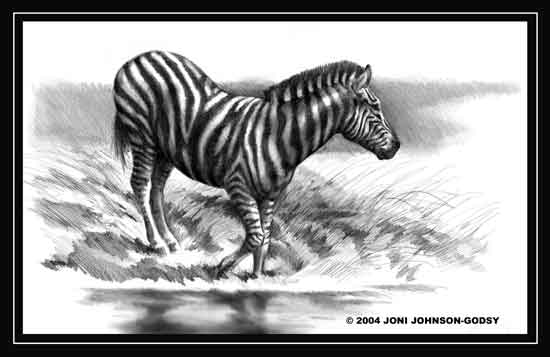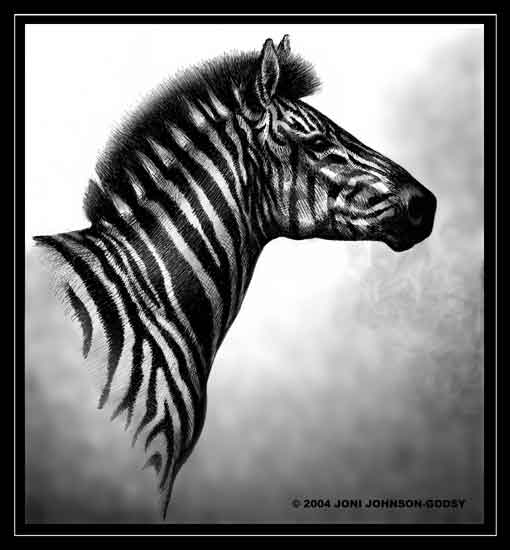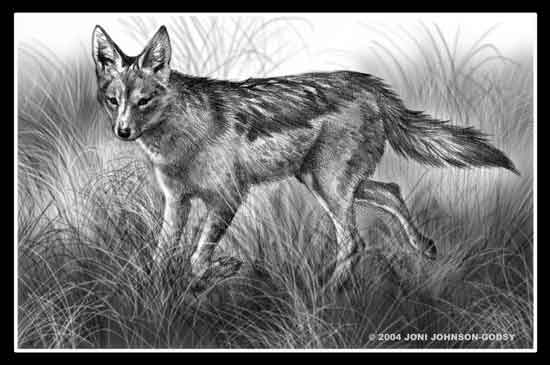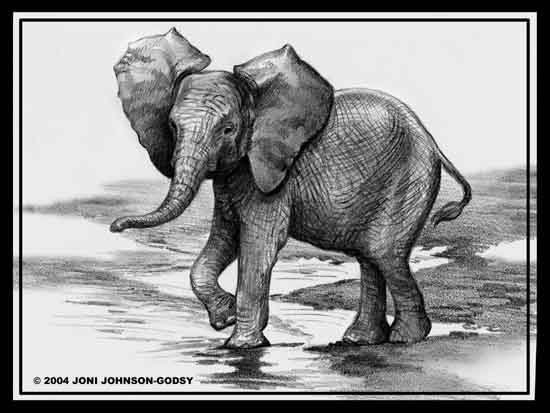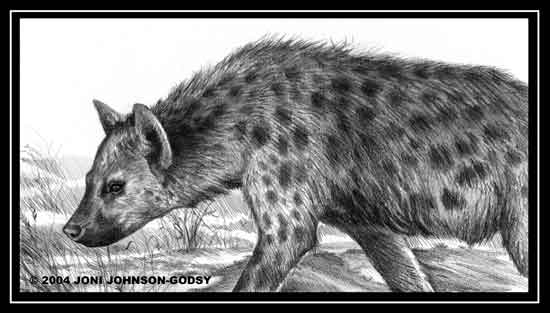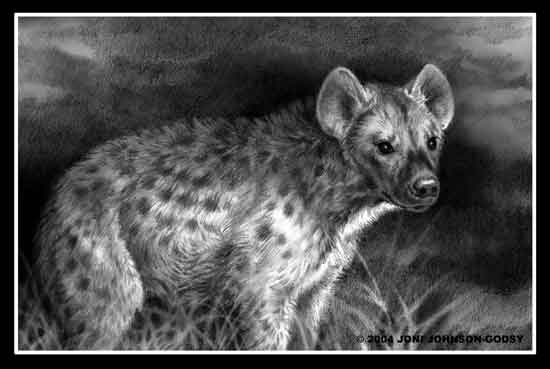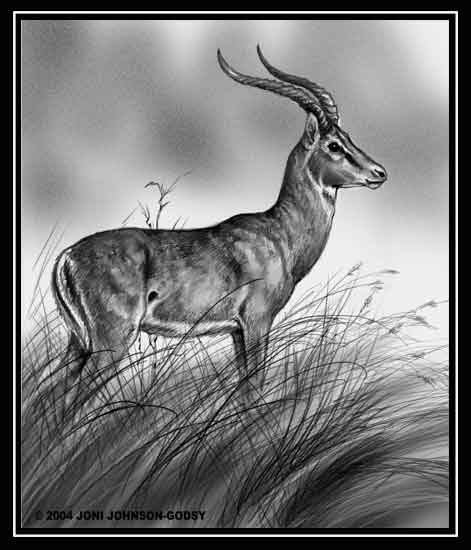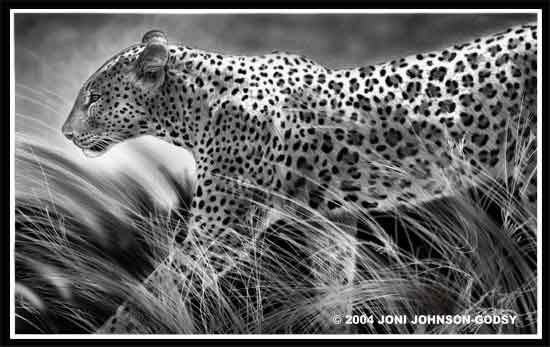WILDERNESS AND THE WILD The amazing animal and bird species of Africa are the crown jewels of this great continent. I have spent a great deal of time observing many of these species as captive animals in zoos and sanctuaries and feel strongly that these facilities are important in many ways, working to save species struggling to hang on in the wild and educating the public on the plight of wild animals, among many other benefits. In a perfect world I would hope that all wild animals could live freely. But it is not a perfect world and captive animals now serve as vital ambassadors for their kind. This is worth mentioning because of what I’m about to reflect upon.
Joni visits with a captive cheetah at the world renowned Dewildt Cheetah Sanctuary, South Africa It was a safe guess to assume that wild animals would behave differently from their captive counterparts and I expected to see this. But no one could have prepared me for how dramatic this difference would be. Ungulates in the wild are much more wary and alert, not being able to afford the blasé attitude that those in zoos can enjoy. They are on the menu of virtually every predator in the bush and the unwary will not live to see their next hour. Big cats in the wild are fit and lean with muscles that ripple as they move. Theirs is a tough life and this toughness is evident throughout their bodies. There are no paunchy stomachs but only efficient tightness in skin and general physique. They are battle worn, wearing scars on their faces like badges from many wars fought well. The light of life burns brightly in their eyes because there is a reason to use the intelligence that they are graced with, which places them neatly at the top of the food chain. Wild hippos are fiercely territorial being statistically the most dangerous animal in Africa. They react to virtually everything they see that is in what they consider to be their space. A hippo in a zoo could not live in this way, as his space is invaded by hundreds of human visitors everyday. He must learn to share his world with many unwanted intruders and cope with the stresses of this unnatural situation. I was astounded at the differences in the behaviors of all the wild animals but it was the elephants that took my breath away. Their behavior was so dramatically different from those I had seen before in captivity. It was as if they were a totally different animal. I try to avoid anthropomorphism, feeling that it usually discredits animals and denies them the right to their own forms of intelligence and communication. However, having said this I could not help but notice that elephants in the wild are so expressive and social, wearing their emotions right out there on their faces for all to see. Their eyes reflect anger, empathy, concern, serenity and a myriad of other emotions. I was astounded that their emotions were so evident while living in their special wild world.
Looking on, as a large bull elephant pushes over a tree THE CRADLE OF HUMANITY Africa is host to the most spectacular and varied mammal species’ on the planet. The African landscape throbs with life, with someone there to fill every niche there is to possibly fill. The ebb and flow of life ties itself to the rains that may or may not come. Creatures here have a tough living to make. Some are better at it than others. Each creature depends on the others for their very survival in a world of superbly designed cohesion. It is a perfect but brutal plan. There is no room for sentiment here. Things are how they are. It is as simple as that.
Kudu bull carcass The story here is a human one too. Echoes of past voices ride on the wind, voices of dying cultures and the knowledge that is lost with their passing. One can ponder the unspoken truths of a human history that has never been written. So much has been lost as our species has evolved within this cradle of humanity. Western ways now leak into every facet of the world, even in the smallest and most remote of human habitation. Indigenous cultures of the world are perhaps the most endangered species of them all. The winds of change are swift and strong. Within human evolution, a new age has begun.
Bushman Milaki demonstrates ancient hunting technique, central Kalahari, Botswana In Botswana there is still a strong bush culture and some of the ancient knowledge of bush survival is continuing to be passed on to their children. But the Bushmen now wear western clothes and have adopted many western ways. They are no longer permitted to partake in subsistence big game hunting which has always been the very essence of their lives. When white settlers arrived on this great land, the Bushmen possessed a culture that did not fit into the mold of modern Euro life in southern Africa. Bushmen were considered by the small but dominant white culture to be a nuisance and were hunted and shot like animals up until as late as the 1950’s. Imagine that, if you even can... Now the human saga continues on in modern conflict with never ending political battles to find some kind of cohesion between races. There are whites with varying European backgrounds and blacks with varying tribal traditions all trying to find their place in a modern world that does not welcome great differences. It is a difficult situation where everyone rightfully wants their place in society to be one of a comfortable and dignified life. But comfort and dignity do not belong to everyone. So the human struggle continues…
Bushmen Milaki and Xhase build a fire; central Kalahari, Botswana
Bushman Xhase emulates an Oryx antelope in a sacred dance
Joni with Bushmen Milaki and Xhase, central Kalahari, Botswana MARKED TARGET In nature, nothing is eminent. The fragile balance between predator and prey can be stacked either way, depending on who has the luckier day. Nxai Pan National Park in Botswana is like many other areas in the arid Kalahari where water forces enemies to live side by side. It is not possible to predict the outcome of conflicts between these enemies. It is never over…until it is over. We were viewing a pride of lions who had taken up temporary residence near a rare and vital waterhole in the Nxai Pan. They had lounged about all day, relaxing in what little shade they could find. Two huge males were on the fringes of the pride with the mothers and cubs grouped together, enjoying the relative safety afforded to the king of beasts.
Limping along in the mid day sun toward the waterhole was a female zebra who desperately needed water. The other members of her group had pushed her out of the herd because of her obvious vulnerability. She had a great open gash over her left side where a big cat had recently grabbed her from behind. The attack had left her injured but it had been her day of luck, as she had escaped with her life. But now she was alone and unable to share the stripes of her comrades to confuse predators. She limped on toward the water. She must take her chances and lower her head to drink, or die of dehydration. When the zebra finally reached the water’s edge she was visibly nervous. She glanced around furtively while muscles all over her body twitched. She was watchful and jumpy, keeping the weight of her body forward so she could flee at a moments notice. After a lengthy, nervous hesitation she finally found the courage to lower her head. She was so very thirsty.
By the time the zebra reached the water the posture of the female lions had dramatically changed. They transformed themselves from big lazy beasts into intense streamlined hunters. They twisted their muscles into the classic stalking pose, creeping very low in the grass toward the zebra. The air was very still. Two black backed Jackals arrived on the scene like spectators at a feature film, readying themselves for any opportunities that could come of this. Every time the zebra lifted her head to take a nervous look around the lions froze in the grass until her head dropped again, when the creeping would continue. The movement of the lions was simultaneous with that of the zebra as her head lowered and raised and lowered again. The lions had worked their way up to what seemed like striking distance of the injured zebra. The jackals, keeping their distance, darted about on the shore of the waterhole in impatient anticipation of this potential meal. The lions now were very close. The zebra’s fate seemed sealed. I began to ask myself how I would handle the outcome that seemed eminent, as it was to play out right before me. My heart was in my throat. I found that I was routing for the zebra, but kept telling myself that sentiment has no place here. The zebra wants to live. The lions need to eat. Someone must loose for the others to win.
I noticed that my mouth and throat had gone completely dry. The moment of tension lingered in the stillness of the mid day sun. Suddenly something seemed to change on the breeze. The zebra lifted her head for a final time and boldly limped away from the waterhole. The life reviving liquid appeared to have given her new found courage. To my surprise the lions remained frozen in the grass and watched her as she limped away. They did not follow her. They did not even move. The zebra was finally out of our sight. Hers was another lucky day. With enough of these, her wounds would heal and she could rejoin her group to blend into the landscape once again. The lions resumed their place as big lazy cats while the visibly disappointed jackals trotted off to find another drama playing out, that may in its conclusion provide them with dinner. It was time for me to relax again too, and to secretly celebrate for the zebra.
Black backed Jackal, Nxai Pan, Botswana TO BLUFF OR NOT TO BLUFF A charging elephant can be a sobering sight. That is unless this elephant is only four and a half feet tall. Young elephants can be cantankerous little creatures and seem more likely to bluff charge than their giant relatives. I was grateful for this, as we did have an angry mom come charging at us once and that sets a feeling of panic into you that you won’t soon forget. But the little guys are fairly harmless and can put on quite a show. Perched in an open topped Land Rover on the shore of the Chobe River, we were watching a herd of elephants at the water’s edge. The scene was one of serenity as some of the family members were enjoying the depths of the water, splashing about and socializing with each other. Some elephants remained on land which is where the tiny babies were. Their mothers kept them from going out into deep water, so they played about in the shallows and on the shore. Suddenly a young elephant, one of the smaller ones in the group came running over to us. He came on stiff stumpy legs making himself as tall as he could be, with his ears erect, flapping and flaring his angry energy towards us. His stumpy, short little trunk lifted into the air in a perfect “S” shape and the high pitched blast of a poorly blown trumpet shot out of him. His trumpet blew and blew and his ears waved to and fro, riding on a tiny head that swayed back and forth. He approached and stopped and approached and stopped again with his tiny heart in a flutter the whole time. Closer and closer he came. We sat motionless watching this sweet creature with laughter in our hearts.
When the little elephant reached the distance he guessed appropriate he stopped his “charge” and stood motionless, looking us over for a brief moment. Still we did not move. His courage started to melt away and his bruised ego began to envelop him. The entire demeanor of his body changed as his head sagged and little ears began to droop. His stumpy trunk went limp and hung to the ground. His legs became soft and weak. He turned and walked slowly away. The baby elephant was greeted by another slightly older youngster and the two caressed each others faces with their trunks as if to console each other. I could just hear the little bluffing baby whispering to his friend, “I’ve got to work on that”. NATURE’S BAD GUYS Every story needs a villain, better yet multiple villains. I really don’t know exactly how the hyena earned this place, as really he just has a living to make like everyone else. Perhaps it is his skulking, guilty looking posture that somehow sets him apart or his ability to consistently show up at just the right moment for thievery to benefit him. Or perhaps it is his eyes that glow in darkness or the eerie call he makes in the night that sends tingles down your spine, causing you to glance nervously over your shoulder. Or maybe it is the condescending frantic giggle that sends your imagination into overdrive. What makes him a demon of the darkness? Much to the dismay of all other predators in the bush the hyena is a clever chap, a master opportunist who is always where he needs to be, which is usually where he is most unwanted.
Spotted Hyena, Okavango Delta, Botswana But the hyena is really more of a skilled hunter than anything else. A hippo carcass was found in the tall grass not far from our camp one morning. We could see that the kill was fresh. Prints in the sand around the carcass revealed exactly what had happened to this unfortunate hippo. Only hyena tracks were found. A pack of hyena had surprised the hippo while he was on dry land for his nightly grazing and had single handedly brought down this dangerous, grumpy behemoth. A bare skeleton and thick rubbery skin were the only proof left that this huge creature had ever existed. Our tracker had located a hyena den which we visited in the evening after dark. Three youngsters were loitering about, showing concern for their mother who had left them behind while she went out hunting. They were surprisingly curious about us and bravely approached, until the haunting call of their mother echoing in the distance set them to worrying again. In seeing vulnerability in these youngsters, we were able to witness for ourselves the softer side of the bad guys of the bush.
Hyena youngster SPOTS IN THE GRASS In Africa a leopard owns the night. When darkness envelopes the bush everything alive must beware of this efficient opportunistic hunter. Their large size does not betray them as they lie in silence, perfectly hidden in the tall grass. A leopard that does not wish to be seen will not be seen. They lie in wait sometimes only several feet from their quarry without detection, with natural instincts telling them to stay downwind of their next potential meal. Patience and keen concentration rule their world. Their survival depends on the use of emotional restraint. When a leopard is nearby, nothing is safe in the blackness of the night. Absolutely nothing. To watch a leopard involved in the act of hunting is an awe inspiring sight. The power of their gaze, their unparalleled stealth and their commitment to the task at hand is unrivaled in the animal kingdom. The leopard does not have the advantage of others of his kind to help in the hunt as do lions, and they do not possess the sprint power of the cheetah to succeed in a high speed chase. He must rely on his cunning and on silent ambush to keep himself fed. We were fortunate to stumble across a female leopard beginning a hunt, and surprisingly it was in broad daylight. An area tracker had spotted her with a cub the morning before so we knew that she had more than one mouth to feed. We were actually heading back to camp after a successful morning game drive when we ran across her. Naturally, our lunch had to wait! We were about to witness a leopard attempting to have hers. The sun is very bright in the African mid day. Shadows are short and harsh making a leopard nearly impossible to keep track of as she moves about. Her spots did exactly what they are designed to do, as we could hardly see her in the tall grass even when she was nearly right beside us. She had her sights set on a large herd of impala very nearby. The leopard crept very low through wheaten grasses that were nearly the same color as she. The impala were unaware that the greatest hunter in the bush was ultimately only yards away. Our leopard surprised us as she engaged in a hunting tactic that in the end betrayed her. She had angled around the group of impala and was now upwind of them and very close. It was only a matter of moments when the dominant male impala was aware of her and snorted a series of loud short blasts that set his girls running. The impala herd in flight was reminiscent of a large school of fish, seeming to move as a single organism. Impala often prefer to have a predator within their sights so the hunter never gains the advantage of surprise ambush. The impala herd did not move far and settled down again as their ram stood watch.
The leopard, knowing that she had been seen, assumed a more upright casual posture and soon busied herself with the important task of grooming. This is how most hunting attempts end for the big cats. Theirs is a tough living to earn. She was unsuccessful this time but beware, she will hunt again. And in the blackness of the night nothing will be safe from the spots in the grass.
|
